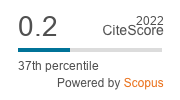The man of desires or of “neo-utilitarian anthropology”
DOI:
https://doi.org/10.17421/1121_2179_2003_12_02_SaglianiAbstract
Contemporary utilitarianism, which constitutes a return to classical utilitarianism, is the result of a renewed interest in normative ethics, following upon the period dominated by analytical metaethics. Although it is possible to sketch a “utilitarian ethical model”, according to which the criterion of the good is the principle of utility, it should be kept in mind that contemporary utilitarians can each be regard as a “species unto himself”, distinguished from the others both in the area of value theory (hedonistic utilitarianism and utilitarianism of preference) and in the area of obligation theory (act and rule utilitarianism). Still, it is possible to delineate an anthropological model which corresponds to the “utilitarian subject”, and which is more or less explicitly present and conscious in all of the contemporary utilitarians. Following the hypothesis according to which the criterion of value, for all of the neo-utilitarian ethical theories, is man’s appetitive dimension, the fundamental characteristic of the utilitarian subject is his capacity to experience desires. Such an anthropology is the basis of the difficulties faced by an ethical theory that may well be considered an ethical intellectualism, one bound to exclude, as “nonrational” (under a quantitative conception of rationality) many aspects of human experience. A different anthropological horizon, generated by a new phenomenology of desire, could enable a moral theory whose definition of the good reflects the real structure of man to present itself as a significant answer to the challenges of post-modernity.



